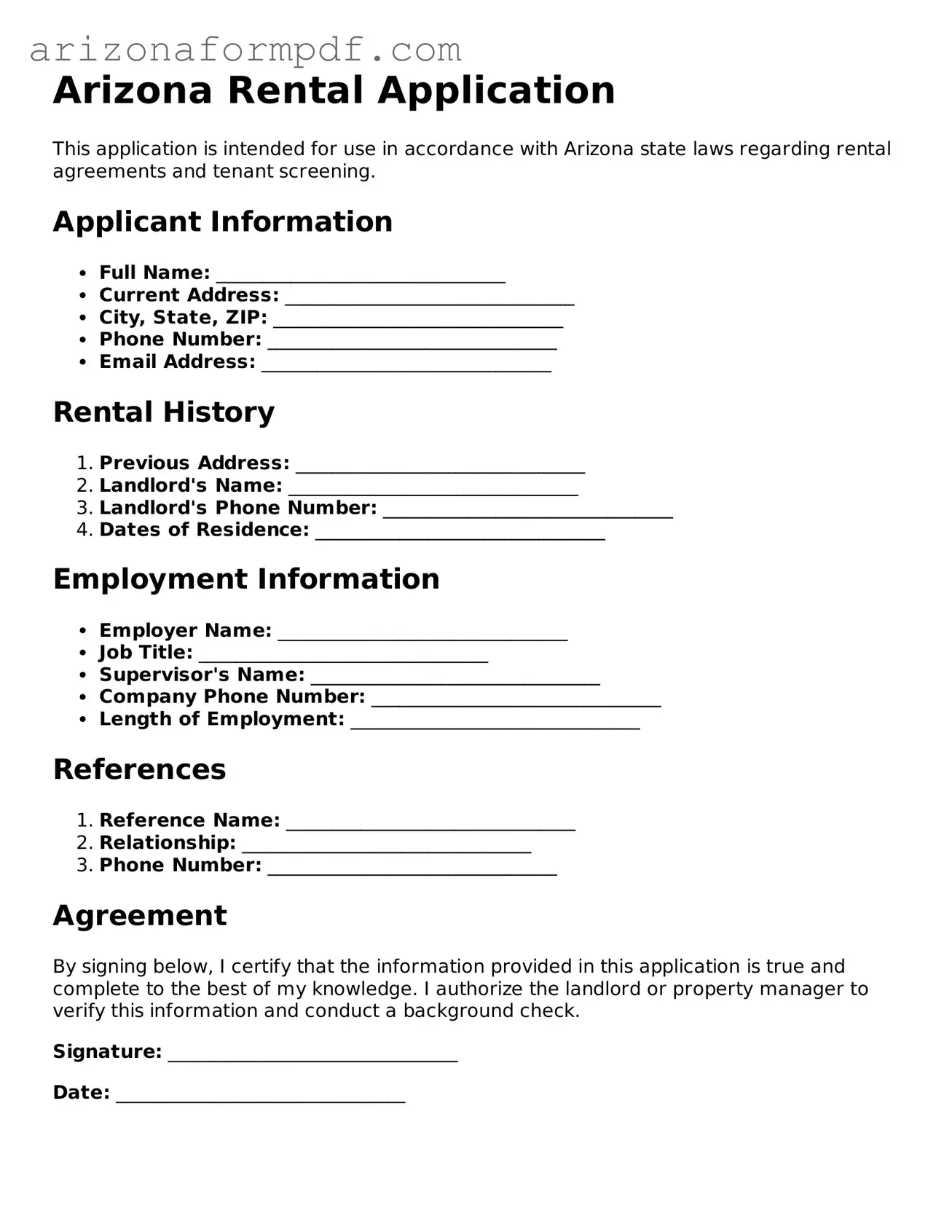The Arizona Rental Application form shares similarities with the standard lease agreement. Both documents require essential information about the tenant, such as their name, contact details, and rental history. While the lease agreement outlines the terms of the tenancy, the rental application serves as a preliminary step to assess the tenant's suitability. Both documents aim to protect the interests of landlords while ensuring that tenants understand their responsibilities.
Another document similar to the Arizona Rental Application is the tenant screening form. This form collects information that helps landlords evaluate potential tenants. It often includes questions about employment, income, and references, much like the rental application. The tenant screening form is typically used in conjunction with the rental application to provide a comprehensive overview of a prospective tenant's background.
The credit application form also resembles the Arizona Rental Application. This document specifically focuses on a tenant's credit history and financial stability. Landlords often request this form to gauge a tenant's ability to pay rent consistently. Both documents work together to give landlords a clearer picture of a tenant's financial reliability.
The employment verification form is another document that aligns closely with the rental application. This form is used to confirm a tenant's employment status and income level. It typically requires the tenant to provide details about their employer and salary, similar to the income information requested in the rental application. Both documents help landlords assess a tenant's financial capacity to meet rental obligations.
A background check authorization form is also comparable to the Arizona Rental Application. This form allows landlords to conduct background checks on prospective tenants, including criminal history and past evictions. While the rental application collects personal information, the background check form specifically authorizes landlords to verify that information. Together, they help landlords make informed decisions about tenant selection.
The rental history verification form shares key similarities with the Arizona Rental Application. This document seeks to confirm a tenant's previous rental experiences and payment history. It often requires the tenant to provide contact information for past landlords. Both forms aim to ensure that tenants have a reliable rental track record, which is crucial for landlords assessing potential risks.
The guarantor application form is another document that aligns with the rental application. This form is used when a tenant requires a guarantor to co-sign the lease. It collects similar information about the guarantor's financial status and relationship to the tenant. Both applications help landlords evaluate the overall financial stability of the tenant and their support network.
The pet application form is comparable to the Arizona Rental Application in that it gathers specific information about a tenant's pets. This document may require details about the pet's breed, size, and vaccination records. Like the rental application, it helps landlords determine whether they will allow pets in their rental properties, ensuring that all aspects of tenancy are addressed.
The roommate application form also bears similarities to the Arizona Rental Application. This document is used when multiple tenants plan to share a rental unit. It collects information about each roommate's background and financial situation. Both applications help landlords assess the compatibility and reliability of all tenants involved in the lease agreement.
Finally, the move-in checklist can be seen as related to the Arizona Rental Application. While it is not a screening document, it is part of the rental process. This checklist outlines the condition of the rental unit before a tenant moves in. It ensures that both parties agree on the state of the property, which can help prevent disputes later on. Both documents contribute to a smoother rental experience for landlords and tenants alike.
